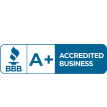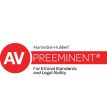
Nearly all Americans participate in retirement savings and/or have a policy of life insurance. In addition, many Bulman Dunie clients hold brokerage accounts. Retirement savings plans, insurance policies, and brokerage accounts have one common element. When you open the account or take out the policy, you are asked to complete a beneficiary designation form.
Do you know who you have designated as the initial beneficiary of each asset? Who is your contingent beneficiary? Have you married, divorced, or had children since you initially completed the beneficiary designation form? Are your beneficiary designations consistent with your will or trust?
What is a Beneficiary Designation?
A beneficiary designation identifies who will inherit an asset upon your death. The beneficiary designation often includes an initial (or primary) beneficiary, as well as a “contingent beneficiary”. The contingent beneficiary is the person who will inherit if the initial beneficiary has predeceased the owner. Many beneficiary designation forms permit an owner to name multiple beneficiaries (i.e., a spouse as the initial beneficiary followed by all children as equal contingent beneficiaries). Each financial institution has its own form which is commonly completed at the time the account is opened (or insurance policy is purchased).
What is the Purpose of a Beneficiary Designation?
An asset that passes pursuant to a beneficiary designation is not required to be included in the probate estate when the owner dies. The named beneficiary completes a claim form and the institution then coordinates with the beneficiary on the transfer of the asset. A beneficiary designation can be particularly helpful for blended families and, in particular, for a parent who wants to secure an inheritance for both children from a first marriage and a surviving second spouse.
What if My Beneficiary Designation Conflicts With My Will Or Trust?
Now you see the potential for conflict. In most circumstances, the beneficiary designation form trumps the terms of a will or trust. For example, if a beneficiary designation form identifies an ex-spouse as the pay-on-death beneficiary of an asset, but you have since updated your will to provide for your current spouse to be the beneficiary of your estate, the asset never becomes part of your “estate”. The asset passes pursuant to the beneficiary designation on file. Unfortunately, it is not unusual for Bulman Dunie attorneys to litigate disputes arising from this fact pattern.
Can I Name My Trust as the Beneficiary?
Absolutely. This is one of the advantages of revocable trusts (or “living trusts”). You can name your trust as the beneficiary of an asset. The asset will then be held in your trust upon your death and pass pursuant to the beneficiaries of your trust in whatever shares your trust directs. As clients’ goals change and families grow, it can often be easier for clients to manage the terms of a single trust as opposed to managing many different beneficiary designations.
What if All of the Designated Beneficiaries are Deceased?
If an initial beneficiary has predeceased the account owner, the contingent beneficiary(ies) will inherit the asset. If the contingent beneficiary(ies) have also predeceased the account owner, then the asset will be included in the owner’s probate estate and pass pursuant to the terms of the owner’s will.
The Takeaway
Confirm your beneficiary designations for each and every account or insurance policy that you own. If you use a financial planner to manage your investments, this is where your planner can earn his/her fee. If you have already completed a will or trust, make sure the beneficiary designation on file is up-to-date. If you experience a divorce, work with your divorce attorney and estate planning attorney to update your beneficiary designations and your estate plan—your divorce settlement or premarital agreement may require designating an ex-spouse or children as the beneficiary of assets.
Bulman Dunie estate attorneys Jeremy Rachlin and Jared Sands commonly answer client questions about beneficiary designations and administer these documents after the owner’s death. Please call us at (301) 656-1177, or feel free to e-mail Jeremy at jrachlin@bulmandunie.com or Jared at jsands@bulmandunie.com. We’re here to help.









